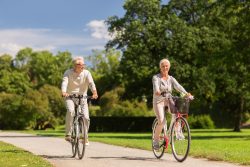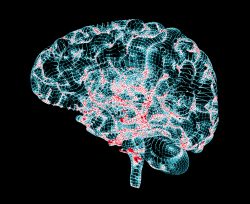The Dangers of Recreational Noise Exposure
 New study reveals alarming prevalence of dangerous listening practices and potential hearing loss risk for billions of people worldwide. Dangerous listening habits, both from personal listening devices and attending noisy entertainment venues, are widespread. About 23.81% of people engage in unsafe listening practices, while 48.20% are exposed to high noise levels in these venues. Shockingly, these habits could potentially put 1.35 billion individuals at risk of hearing loss globally.
New study reveals alarming prevalence of dangerous listening practices and potential hearing loss risk for billions of people worldwide. Dangerous listening habits, both from personal listening devices and attending noisy entertainment venues, are widespread. About 23.81% of people engage in unsafe listening practices, while 48.20% are exposed to high noise levels in these venues. Shockingly, these habits could potentially put 1.35 billion individuals at risk of hearing loss globally.
This alarming issue of hearing loss deserves urgent attention and global recognition. The World Health Organization warns that currently, over 430 million individuals globally suffer from harmful hearing loss. If we fail to prioritize hearing loss prevention, this number could double in the near future.
Hearing loss risk depends on factors such as the loudness, frequency, and duration of noise exposure. To put things into perspective, acceptable levels of loud noise exposure are usually based on occupational noise exposure limits. For example, the limit is usually set for 40 hours a week at 80 decibels. However, these limits can vary slightly depending on your region or regulatory agencies.
Researchers at the Medical University of South Carolina conducted a comprehensive study to assess the extent of unsafe listening practices among young adults. Their findings urge immediate action to protect aural health on a global scale.
By analyzing data from 33 studies involving over 19,000 participants, the research team revealed the prevalence of hazardous listening habits. The study specifically looked at the output levels and duration of exposure using objectively measured devices.
Shocking results unveiled concerning patterns in two areas: personal listening device (PLD) use and attendance at noisy entertainment venues. With 17 records dedicated to PLD use and 18 dedicated to entertainment venues, it is clear that urgent measures are needed to safeguard the hearing of our youth.
By analyzing data on the estimated world population of people aged from 12-34 years old in 2022 (2.8 billion) and their exposure to noisy entertainment venues and personal listening devices, researchers found that 24%-48% of young people, engage in these risky behaviors. The study suggests that anywhere from 0.67 to 1.35 billion young adults could potentially experience hearing loss due to these listening practices.
This groundbreaking research serves as a call to action for evidence-based policies aimed at mitigating the risks of hearing loss in this vulnerable population. The time to prioritize aural health and protect our future generations is now.
To view the original scientific study click below:
Prevalence and global estimates of unsafe listening practices in adolescents and young adults: a systematic review and meta-analysis/a>



 In the quest to combat cognitive decline, a groundbreaking study has discovered a simple and cost-effective treatment: aromatherapy essential oils. Scientists investigated the potential of nightly aromatherapy to enhance cognitive abilities in aging individuals. By incorporating scents like lavender and rose into nightly routines, researchers witnessed an astounding 226% improvement in word recall. Additionally, the fascinating impact of aromatherapy oils on the left uncinate fasciculus, a crucial part of the brain, has been revealed and showed marked enhancement.
In the quest to combat cognitive decline, a groundbreaking study has discovered a simple and cost-effective treatment: aromatherapy essential oils. Scientists investigated the potential of nightly aromatherapy to enhance cognitive abilities in aging individuals. By incorporating scents like lavender and rose into nightly routines, researchers witnessed an astounding 226% improvement in word recall. Additionally, the fascinating impact of aromatherapy oils on the left uncinate fasciculus, a crucial part of the brain, has been revealed and showed marked enhancement. A groundbreaking study of nearly 1,500 adults has uncovered a startling link between reduced physical activity and a decline in quality of life among individuals aged 60 and above. Similarly, the study showed that an increase in sedentary behavior, such as watching TV or reading, further compounds this decline. These compelling findings emphasize the urgency of promoting and supporting an active lifestyle among older adults.
A groundbreaking study of nearly 1,500 adults has uncovered a startling link between reduced physical activity and a decline in quality of life among individuals aged 60 and above. Similarly, the study showed that an increase in sedentary behavior, such as watching TV or reading, further compounds this decline. These compelling findings emphasize the urgency of promoting and supporting an active lifestyle among older adults.  New research indicates that constipation may play a significant role in cognitive decline. This groundbreaking study highlights the interconnectedness of the body’s systems and the potential consequences when one system malfunctions. Although the study has not yet been published, the results were recently presented at a prestigious conference on Alzheimer’s disease. These findings shed light on the complex relationship between gut health and brain function.
New research indicates that constipation may play a significant role in cognitive decline. This groundbreaking study highlights the interconnectedness of the body’s systems and the potential consequences when one system malfunctions. Although the study has not yet been published, the results were recently presented at a prestigious conference on Alzheimer’s disease. These findings shed light on the complex relationship between gut health and brain function. In a recent study, scientists have discovered that the coordination between neuronal activity and the brain’s oxygenation is disrupted in older people. This finding sheds light on the crucial relationship between the brain and the cardiovascular system, as the brain relies on a significant portion of the body’s energy used – up to 20%. To meet the brain’s energy needs, specialized “neurovascular units” play a vital role in delivering enough energy supply to the neurons. This research provides new insights into the complex workings of the aging brain.
In a recent study, scientists have discovered that the coordination between neuronal activity and the brain’s oxygenation is disrupted in older people. This finding sheds light on the crucial relationship between the brain and the cardiovascular system, as the brain relies on a significant portion of the body’s energy used – up to 20%. To meet the brain’s energy needs, specialized “neurovascular units” play a vital role in delivering enough energy supply to the neurons. This research provides new insights into the complex workings of the aging brain. Warm weather and beautiful beaches may attract retirees to Florida, but scientists say it might not be the best place to live a long life. Recent research suggests that moderate cold temperatures can increase longevity and decrease the risk of age-related illnesses. This is due to the prevention of harmful protein clumping, which can lead to diseases like ALS and Huntington’s.
Warm weather and beautiful beaches may attract retirees to Florida, but scientists say it might not be the best place to live a long life. Recent research suggests that moderate cold temperatures can increase longevity and decrease the risk of age-related illnesses. This is due to the prevention of harmful protein clumping, which can lead to diseases like ALS and Huntington’s.  New research published in the Journal of the American Geriatrics Society suggests that the amount of fat present in a person’s muscle tissue could be a valuable predictor of cognitive decline in older adults. The study revealed a noteworthy connection between an accumulation of fat in the thigh muscle over a period of 5 years and an increased likelihood of cognitive decline. This association persisted even after considering important factors such as body weight, other fat deposits, muscle traits, and typical dementia risk factors.
New research published in the Journal of the American Geriatrics Society suggests that the amount of fat present in a person’s muscle tissue could be a valuable predictor of cognitive decline in older adults. The study revealed a noteworthy connection between an accumulation of fat in the thigh muscle over a period of 5 years and an increased likelihood of cognitive decline. This association persisted even after considering important factors such as body weight, other fat deposits, muscle traits, and typical dementia risk factors.  In a groundbreaking study conducted by 43 dedicated researchers, a significant breakthrough has been made in understanding and unraveling the mysteries of autism spectrum disorder (ASD). By examining the complex world of the gut microbiome, these findings shed light on the role of environmental factors in the exponential increase of this neurological syndrome.
In a groundbreaking study conducted by 43 dedicated researchers, a significant breakthrough has been made in understanding and unraveling the mysteries of autism spectrum disorder (ASD). By examining the complex world of the gut microbiome, these findings shed light on the role of environmental factors in the exponential increase of this neurological syndrome. The decline in hearing is a common occurrence as we get older. In fact, approximately half of adults over the age of 75 in the United States experience hearing loss that affects their daily lives. Unfortunately, we currently do not have a way to prevent age-related hearing loss. However, researchers have made an interesting discovery. They have found a connection between higher levels of omega-3 fatty acids in the bloodstream and a reduced risk of age-related hearing issues.
The decline in hearing is a common occurrence as we get older. In fact, approximately half of adults over the age of 75 in the United States experience hearing loss that affects their daily lives. Unfortunately, we currently do not have a way to prevent age-related hearing loss. However, researchers have made an interesting discovery. They have found a connection between higher levels of omega-3 fatty acids in the bloodstream and a reduced risk of age-related hearing issues. A large study involving over 200,000 participants found a significant link between mobile phone use and a higher risk of developing hypertension, particularly among frequent users. High blood pressure is a major preventable factor in cardiovascular diseases and premature death worldwide, affecting both men and women. With the widespread use of mobile phones, which had approximately 8.2 billion subscriptions globally in 2020, concerns arise regarding the safety of making or receiving calls, particularly for heavy users.
A large study involving over 200,000 participants found a significant link between mobile phone use and a higher risk of developing hypertension, particularly among frequent users. High blood pressure is a major preventable factor in cardiovascular diseases and premature death worldwide, affecting both men and women. With the widespread use of mobile phones, which had approximately 8.2 billion subscriptions globally in 2020, concerns arise regarding the safety of making or receiving calls, particularly for heavy users.